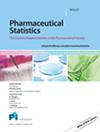利用真实世界的数据,为医疗产品上市后安全监测进行基于信息的分组顺序设计
IF 1.3
4区 医学
Q4 PHARMACOLOGY & PHARMACY
引用次数: 0
摘要
真实世界的医疗保健数据通常用于上市后安全监测研究,以解决与新批准的医疗产品相关的潜在安全问题。此类研究通常涉及根据预先确定的假设对不断积累的安全性数据进行重复评估,而分组序列设计则为此类研究提供了严格而灵活的统计框架。设计分组序列安全性监测研究的一个主要挑战是与产品吸收相关的不确定性,这使得最终样本量或研究的最长持续时间难以确定。为了应对这一挑战,我们提出了一种基于信息的分组序列设计,该设计规定了一个目标信息量,该信息量将产生足够的功率来检测具有临床意义的效应大小。在每次中期分析中,相关治疗效果的方差估计值用于计算当前的信息时间,而预先指定的阿尔法支出函数用于确定停止边界。建议的设计可用于调整潜在混杂因素和/或异质性治疗暴露的回归模型。模拟结果表明,所提出的设计在现实环境中表现相当出色本文章由计算机程序翻译,如有差异,请以英文原文为准。
Information‐based group sequential design for post‐market safety monitoring of medical products using real world data
Real world healthcare data are commonly used in post‐market safety monitoring studies to address potential safety issues related to newly approved medical products. Such studies typically involve repeated evaluations of accumulating safety data with respect to pre‐defined hypotheses, for which the group sequential design provides a rigorous and flexible statistical framework. A major challenge in designing a group sequential safety monitoring study is the uncertainty associated with product uptake, which makes it difficult to specify the final sample size or maximum duration of the study. To deal with this challenge, we propose an information‐based group sequential design which specifies a target amount of information that would produce adequate power for detecting a clinically significant effect size. At each interim analysis, the variance estimate for the treatment effect of interest is used to compute the current information time, and a pre‐specified alpha spending function is used to determine the stopping boundary. The proposed design can be applied to regression models that adjust for potential confounders and/or heterogeneous treatment exposure. Simulation results demonstrate that the proposed design performs reasonably well in realistic settings
求助全文
通过发布文献求助,成功后即可免费获取论文全文。
去求助
来源期刊

Pharmaceutical Statistics
医学-统计学与概率论
CiteScore
2.70
自引率
6.70%
发文量
90
审稿时长
6-12 weeks
期刊介绍:
Pharmaceutical Statistics is an industry-led initiative, tackling real problems in statistical applications. The Journal publishes papers that share experiences in the practical application of statistics within the pharmaceutical industry. It covers all aspects of pharmaceutical statistical applications from discovery, through pre-clinical development, clinical development, post-marketing surveillance, consumer health, production, epidemiology, and health economics.
The Journal is both international and multidisciplinary. It includes high quality practical papers, case studies and review papers.
 求助内容:
求助内容: 应助结果提醒方式:
应助结果提醒方式:


